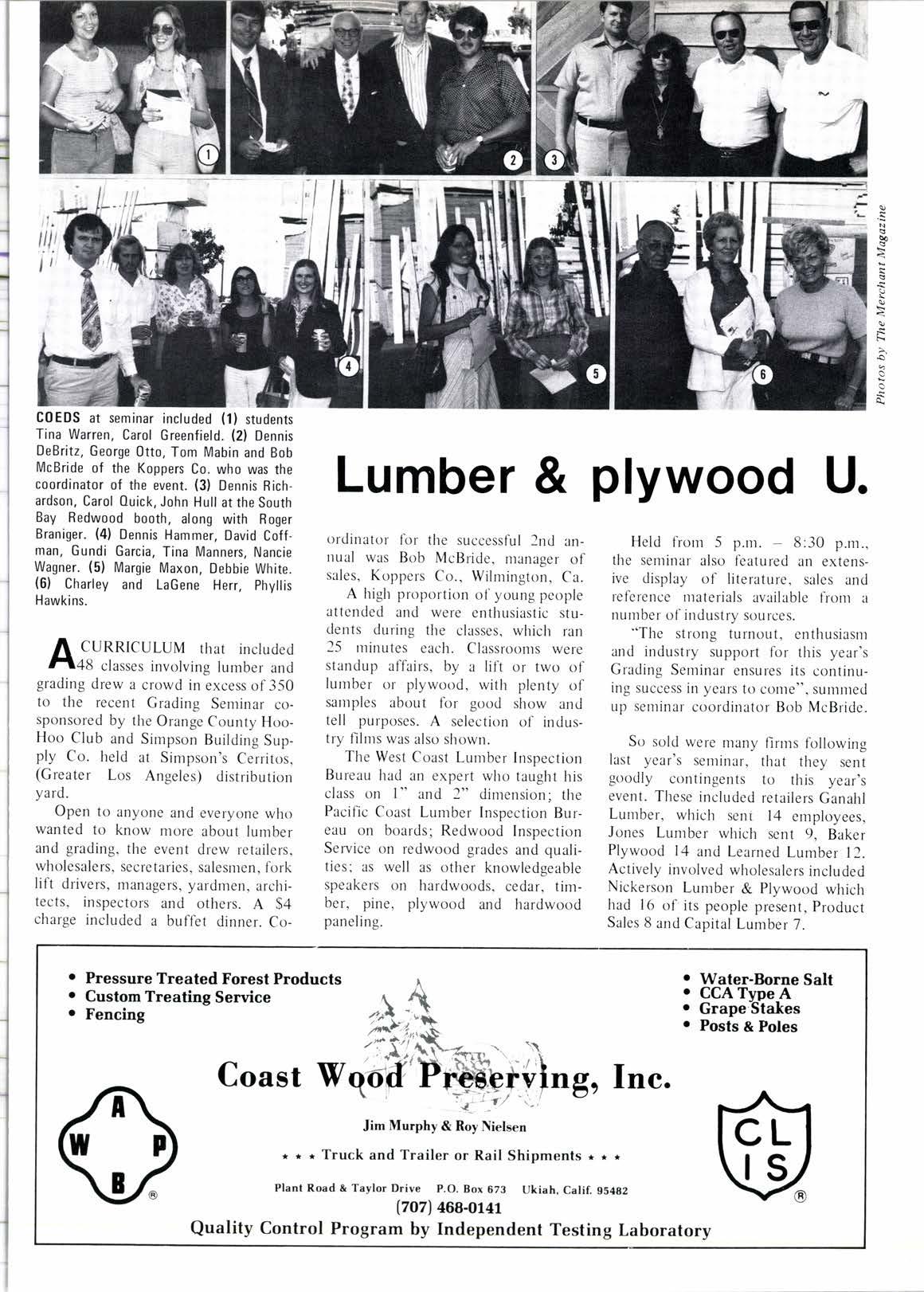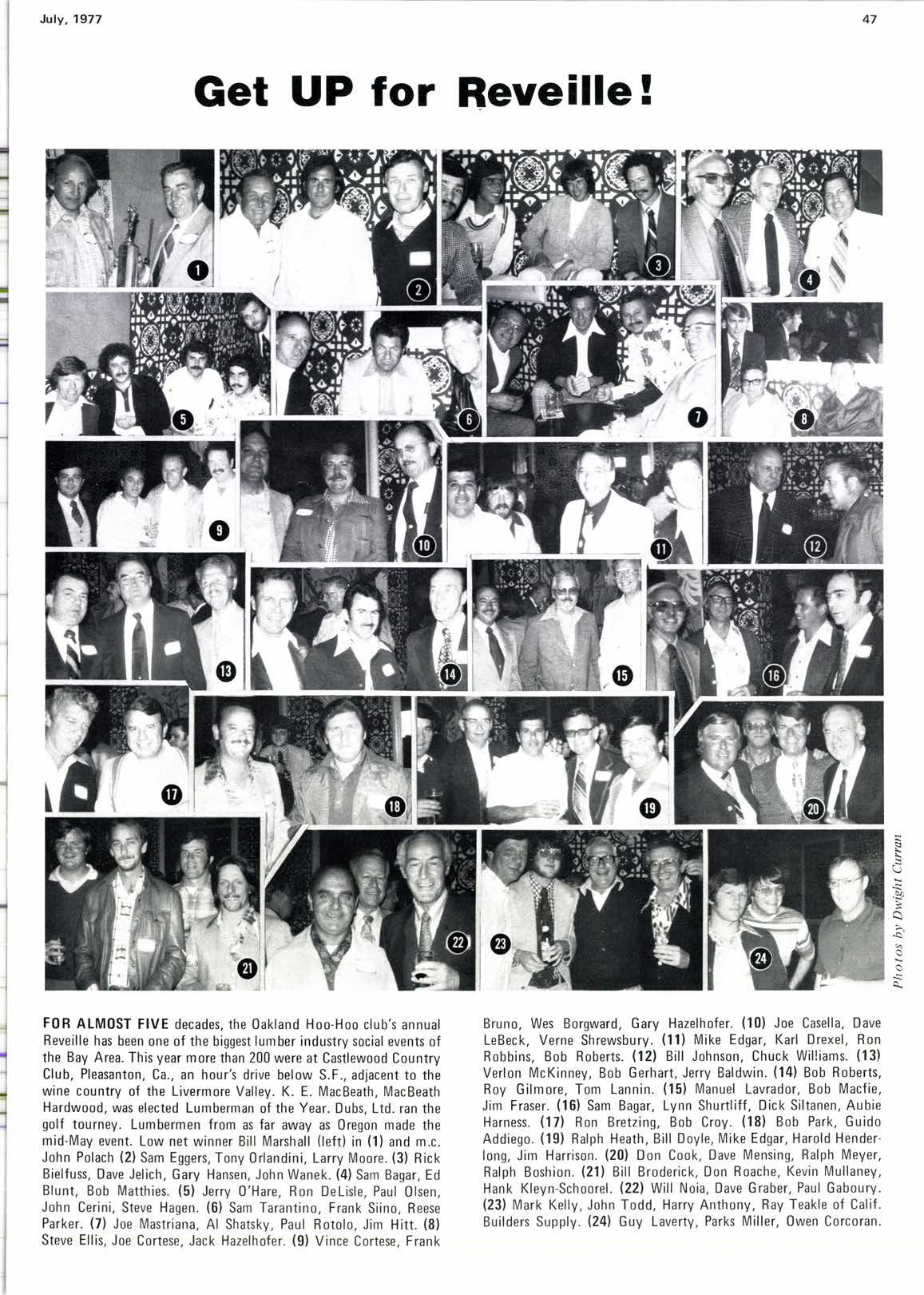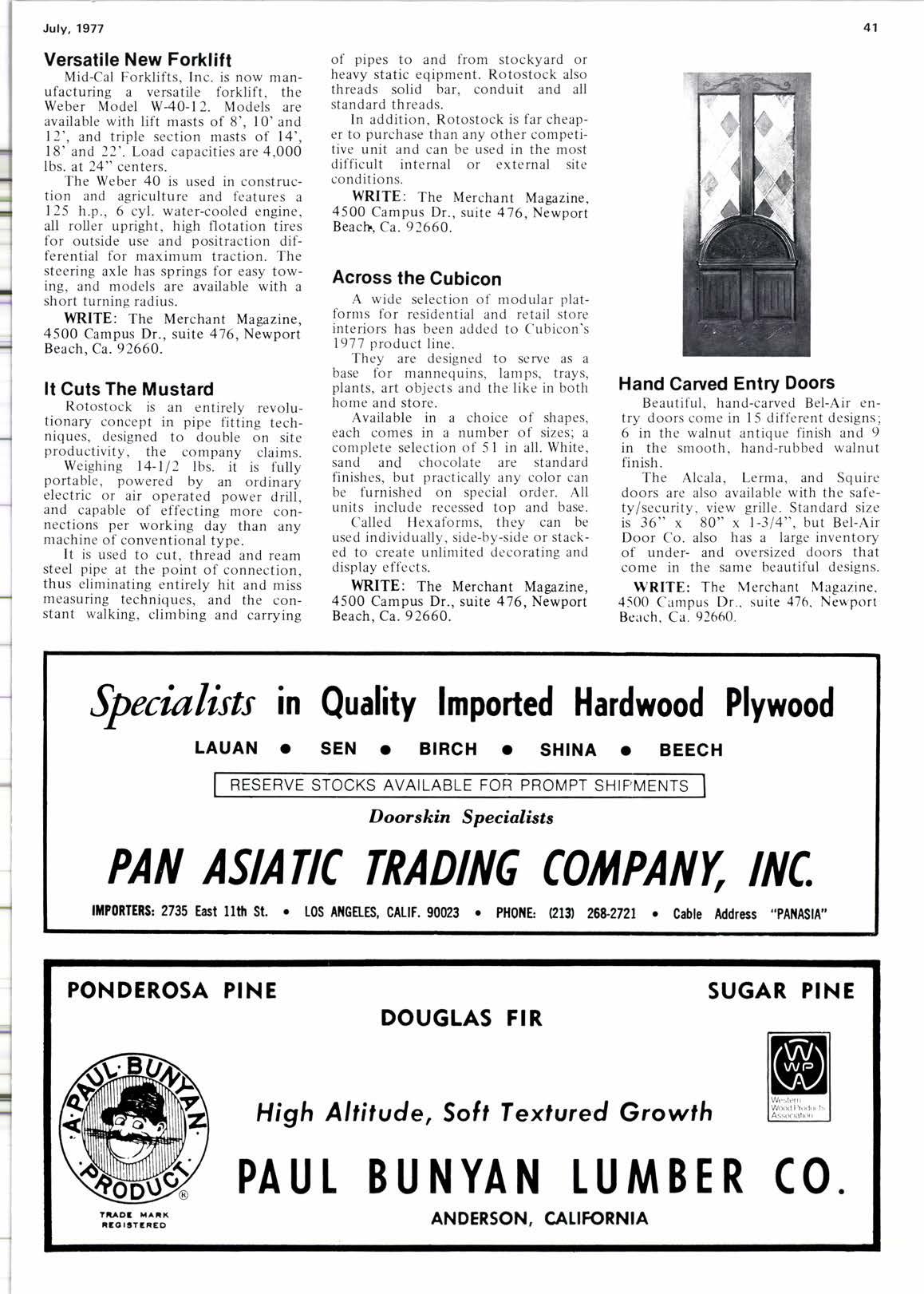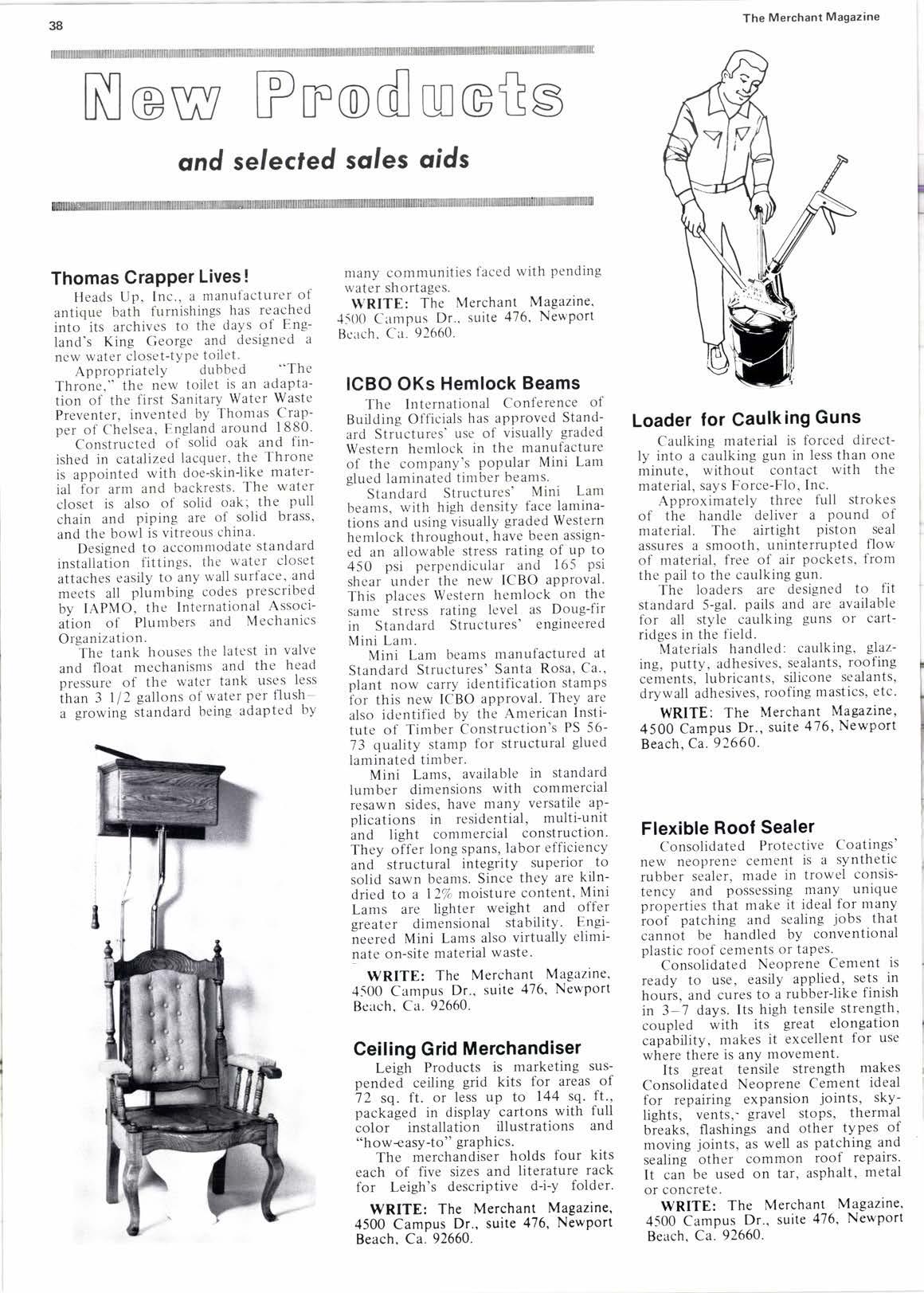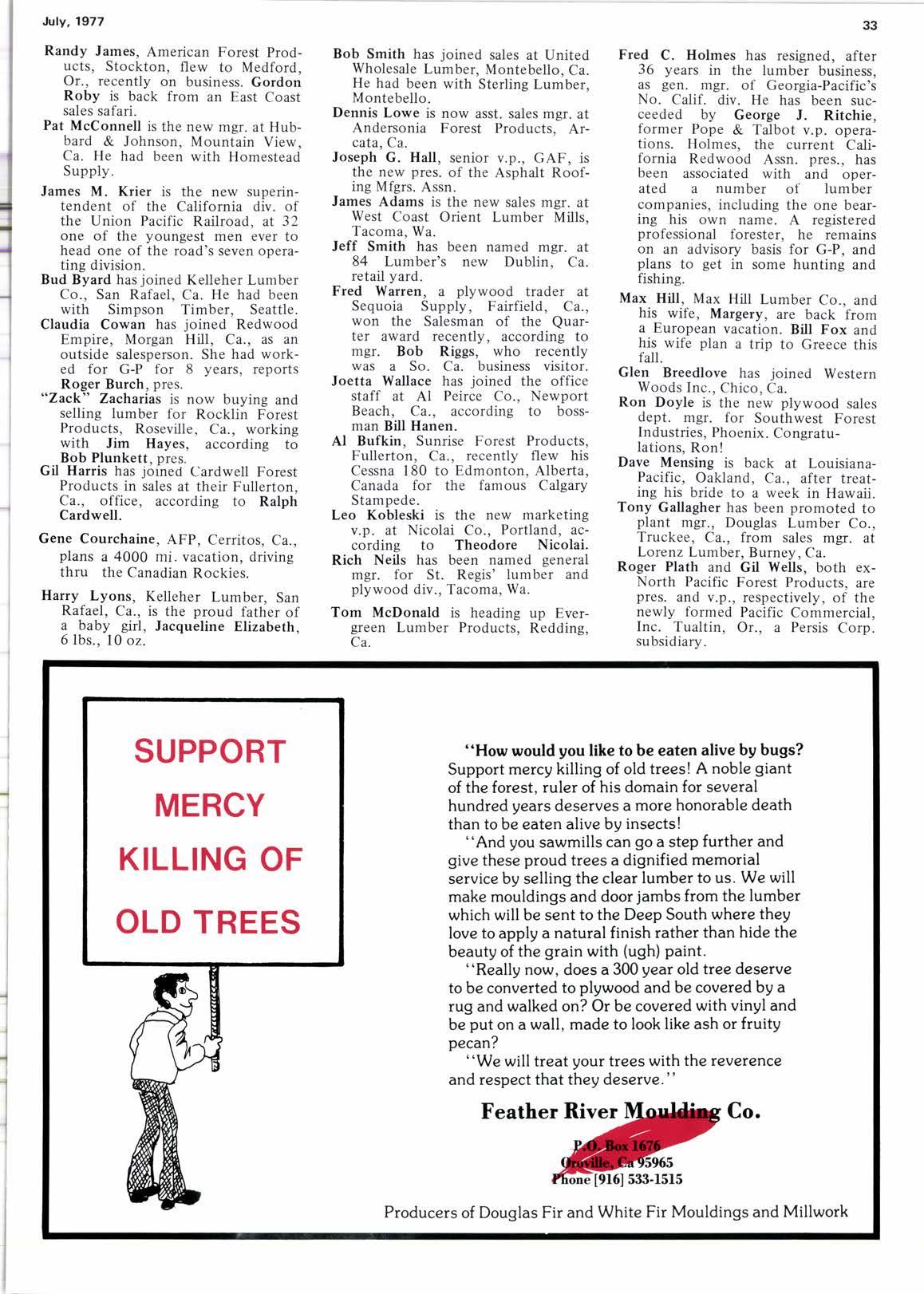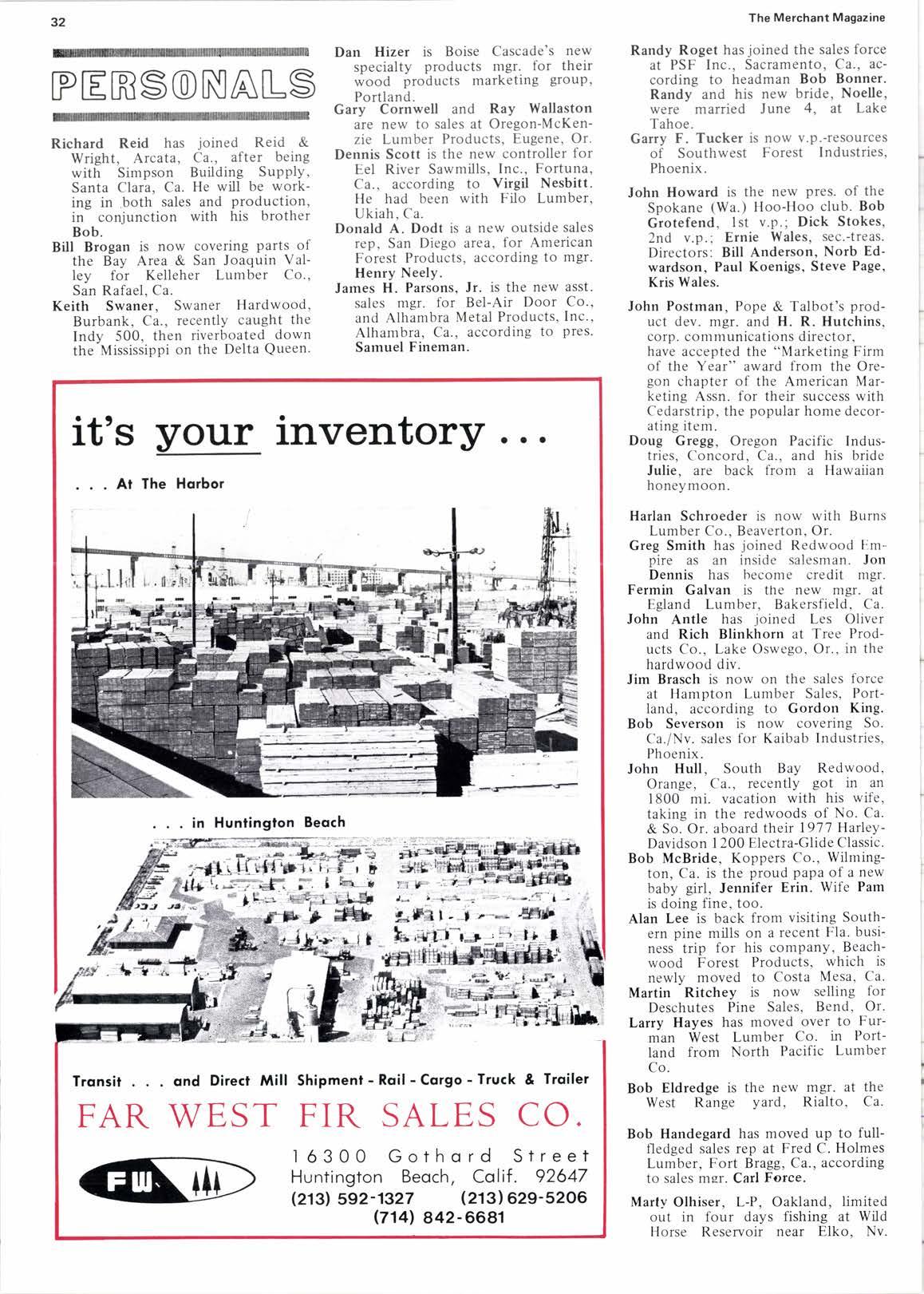
1 minute read
Let her blow!
ffi AN'S OLDEST and simplest r t I energy source is being put to work at newly completed treated-poledesign Pea Soup Andersen's restaurant, on I-5, Santa Nella, Ca.
In one of the nation's first maior installarions of its kind. a giant windmill has been incorporated into the structure to help conserve energy by providing supplemental electrical power.
Conceived by owner Vincent B. Evans, the windmill is of traditional Old World exterior design but its operating mechanism reflects science's most advanced technology.
Exhaustive planning research went into development of the most effective aerodynamic shape for the blades. An improved power transfer device provides for rninimum energy loss.
Seventy-seven feet from the top of the rotating blades to the ground. the mill is designed to becorne operative when prevailing northwest winds reach a velocity of but l0 miles an hour. At peak capacity it is capable ofproducing up to l0 kilowatts of power, a significant percent of the restaurant's total power use.
The basic pole-design concept for the Danish-styled 18,000-sq.-ft. establishment includes the windmill. where partially exposed poles, pressure treated using the "Cellon" process, developed by Koppers Contpany, Inc., contribute to visual iirterest. In the Cellon process, the timbers are impregnated with chemicals providing enduring protection against decay and insect attack. The pole installation was handled under the personal supervision of Leon Durham of Treated pole Builders, Inc., Ontario, Ca.
The Old World atmosphere of an ancient Danish "Great Room," serving as a nrain dining area, is dramatically enhanced with hand-woven traditionalstyle tapestries, of extraordinarv size. which can be raised or lowered io any desired height to serve as room dividers.
A separate and innovative use of Cellon treated poles has been ntade at an adjoining gasoline service station, part of the Andersen conrplex. which also includcs a 56-unit motel.
Story at a Glance
Pressure-treated wood design features new restaurant/moftl complex one of the nation's first major installations of a working windmill ards energy supply.
The gas station poles support an overhead canopy utilizing wood pressure treated with "NCX," a fire retardant formulation, also developed by Koppers. The treated material eliminates two major fire hazards. It reduces the probability of ignition by fire brands from other sources, and it will not produce fire brands dangerous to surrounding combustibles.
Center-bored poles, still another Koppers product, were utilized for exterior lighting standards throughout the complex. The poles, similarly safeguarded in the Cellon process, provide an interior raceway running from top to bottom. The raceway allows wiring to remain unseen, and protected from the weather. Access and hand holes are provided at pole bottoms to facilitate wirine.


